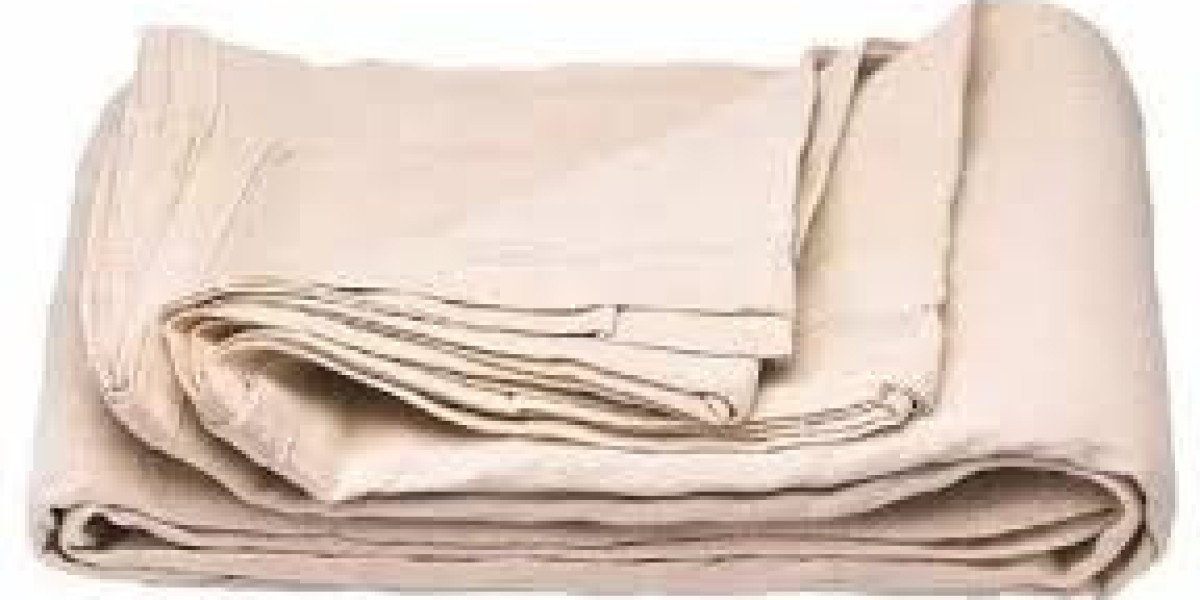When undertaking any painting project, whether it's a small room makeover or a large-scale commercial job, protecting the surrounding areas is crucial. This is where painters tarps come into play. These tarps are specially designed to cover floors, furniture, and other surfaces from paint splatters, drips, and dust. Understanding what painters tarps are, their types, features, and how to select the perfect one can save time, money, and effort while ensuring a clean and professional finish.
What Are Painters Tarps and Why Are They Essential for Every Painting Job?
Painters tarps are protective sheets used to shield surfaces from paint spills, dust, and debris during painting. They act as a barrier that keeps paint confined to the intended area and prevents accidental damage or staining on floors, furniture, windows, or outdoor elements.
Made from materials like canvas, plastic, or polyethylene.
Available in various sizes and thicknesses to suit different projects.
Designed for durability and ease of use.
Using painters tarps not only protects your property but also makes the cleanup process quicker and easier after the painting is complete.
Different Types of Painters Tarps and Their Best Use Cases
Choosing the right type of painters tarp depends on the nature of the project and the surfaces you want to protect. The main types include canvas tarps, plastic tarps, and polyethylene tarps.
Canvas Painters Tarps
Made from heavy-duty cotton or polyester.
Highly durable, reusable, and resistant to tears.
Absorbs paint spills rather than allowing them to pool.
Ideal for indoor use where paint drips and splashes are common.
Plastic Painters Tarps
Lightweight and inexpensive.
Made from polyethylene or PVC.
Water-resistant and waterproof.
Better suited for outdoor projects or for protecting against moisture and dust.
Polyethylene Painters Tarps
A type of plastic tarp that is thicker and more tear-resistant.
Often used in industrial or large-scale projects.
Available in various thickness levels for different levels of protection.
Understanding the material and intended application is the first step in selecting the best painters tarp.
How to Select the Right Size of Painters Tarp for Your Painting Project
Choosing the correct size of a painters tarp is essential to ensure adequate protection without waste or hassle.
Measure the total area you need to cover, including floors, furniture, and any other items.
Add extra inches on all sides to allow for movement and secure coverage.
For large projects, consider buying multiple smaller tarps that can be overlapped or one large tarp for convenience.
Make sure the tarp can be easily handled and stored after use.
Using an appropriately sized tarp prevents paint from reaching unintended surfaces and reduces the risk of slips or accidents caused by uneven or poorly secured coverings.
Understanding the Thickness and Weight of Painters Tarps for Maximum Protection and Durability
The thickness of painters tarps is measured in mils (thousandths of an inch) and plays a significant role in their durability and protective capability.
Lightweight tarps (1-3 mils): Suitable for light indoor painting, dust protection, or temporary use.
Medium weight tarps (4-6 mils): Better for moderate protection, reusable indoors or outdoors.
Heavyweight tarps (8 mils and above): Designed for heavy-duty projects, resistant to tears, and usable multiple times.
Weight often correlates with thickness; heavier tarps provide better longevity and are less likely to puncture or tear during use.
Features to Look for When Choosing Painters Tarps for Different Painting Environments
Selecting a painters tarp involves more than just size and material; there are additional features to consider for specific needs:
Slip-Resistance: Some canvas tarps have a textured surface to prevent slipping on smooth floors.
Water Resistance: For outdoor projects or wet environments, waterproof tarps keep moisture away from surfaces.
UV Resistance: UV-stabilized tarps prevent degradation when exposed to sunlight over extended periods.
Fire Retardant: Fire-resistant tarps offer safety in environments with heat sources or open flames.
Reusability: Durable tarps can be washed and reused for multiple projects, providing cost savings.
Choosing tarps with these features aligned to your project environment ensures better protection and safety.
Benefits of Using Canvas Painters Tarps Over Plastic Tarps for Indoor Painting Jobs
Canvas tarps offer unique advantages for indoor painting:
They absorb paint, preventing it from pooling and causing slips.
More durable and less prone to tearing than plastic tarps.
Reusable after washing, making them eco-friendly and cost-effective.
Provide better traction on smooth floors.
However, canvas tarps tend to be heavier and more expensive than plastic alternatives, so consider the project scale and budget when deciding.
How to Properly Use and Secure Painters Tarps to Prevent Slips and Ensure Full Coverage
Proper use of painters tarps is key to maximizing their effectiveness and safety.
Spread the tarp flat without wrinkles to avoid tripping hazards.
Use painter’s tape or weights to secure edges and corners.
Overlap multiple tarps when necessary to cover large areas.
Avoid placing tarps over loose rugs or carpets without securing both layers.
Regularly check for paint accumulation and clean or replace the tarp when saturated.
These steps ensure a safer workspace and protect surfaces throughout the painting process.
Tips for Cleaning and Storing Painters Tarps to Extend Their Lifespan and Save Costs
Maintaining painters tarps can extend their usability for multiple projects.
Shake off loose debris and dirt before cleaning.
For canvas tarps, gently scrub with mild detergent and water, then air dry.
Plastic tarps can be wiped down or rinsed.
Fold or roll tarps carefully to avoid creases and damage.
Store in a dry, cool place away from direct sunlight to prevent material degradation.
Proper care reduces the frequency of replacement and supports sustainable painting practices.
Environmental Considerations When Choosing Painters Tarps for Eco-Friendly Projects
With growing environmental awareness, selecting eco-friendly painters tarps has become important.
Opt for reusable canvas tarps instead of disposable plastic ones.
Look for tarps made from recycled materials or biodegradable plastics.
Avoid tarps treated with harmful chemicals or flame retardants if possible.
Dispose of damaged tarps responsibly according to local recycling guidelines.
Making environmentally conscious choices reduces waste and supports sustainable project management.
Understanding the Cost Factors Involved in Purchasing Painters Tarps for Different Project Budgets
Pricing varies widely based on size, material, thickness, and special features.
Plastic tarps tend to be the cheapest but are often single-use.
Canvas tarps cost more upfront but save money over time due to durability.
Specialty tarps with fire retardant or UV protection are priced higher.
Buying in bulk for large projects can reduce per-unit costs.
Balancing initial cost against long-term value helps find the best option for your budget.
How to Identify High-Quality Painters Tarps to Avoid Frequent Replacement and Ensure Professional Results
High-quality painters tarps will last longer and perform better, contributing to project success.
Inspect stitching and hems on canvas tarps for strength.
Check for uniform thickness and lack of holes or weak spots.
Ensure plastic tarps are thick enough to resist tearing.
Read product specifications for certifications like fire resistance or UV protection.
Choose tarps with good reviews or recommendations.
Investing in quality upfront prevents interruptions and extra expenses due to tarp failure.
How Painters Tarps Improve Efficiency and Safety on Both Residential and Commercial Painting Sites
Using painters tarps properly not only protects property but also boosts productivity and safety.
Quick setup and cleanup save valuable time.
Minimized risk of damage claims or repainting.
Reduced hazards from paint spills or slippery surfaces.
Maintains a professional appearance that reflects well on painters or contractors.
Painters tarps are a simple yet essential tool for delivering quality results and ensuring client satisfaction.








